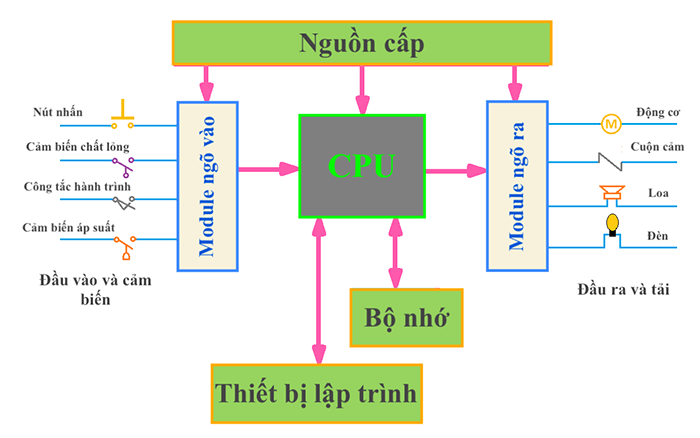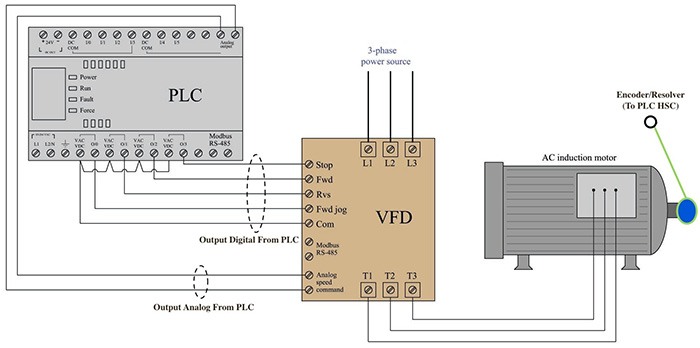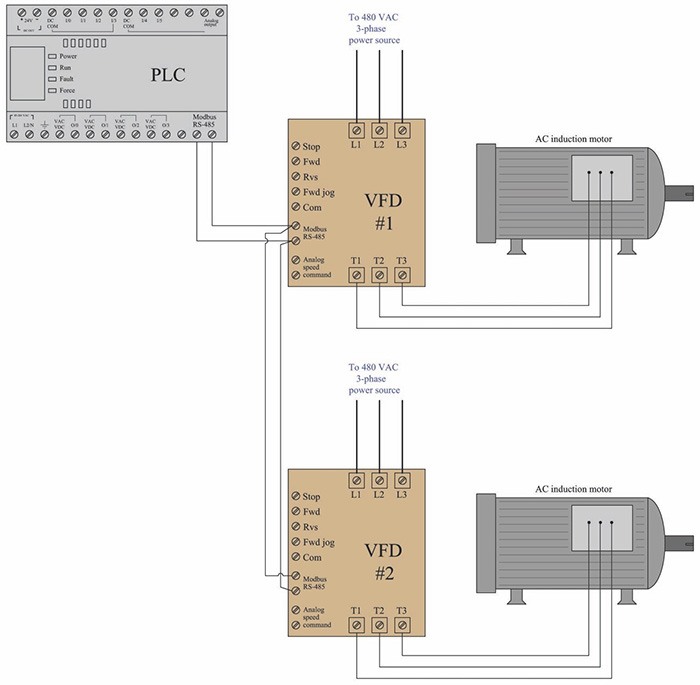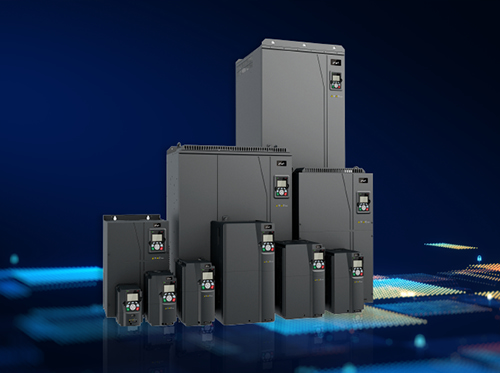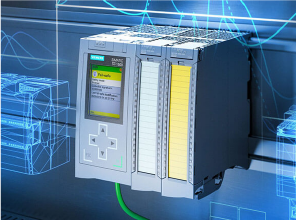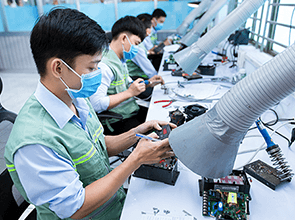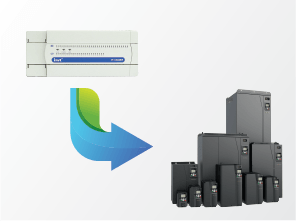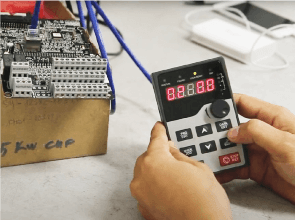Guide to Controlling a VFD Using PLC
PLC allows for flexible control algorithms through programming languages. Therefore, controlling a VFD with PLC ensures precise operation, contributing to the longevity of machinery.
1. Overview of PLC
PLC stands for Programmable Logic Controller, which is a programmable logic control unit. Unlike conventional control units, PLCs can change control algorithms based on programming, enabling flexible control solutions.
Many companies manufacture PLCs, including Siemens, Rockwell, Omron, Mitsubishi, INVT, Delta, among others. Programming languages include LAD (Ladder Logic), FBD (Function Block Diagram), and STL (Statement List). Ladder Logic is the most commonly used PLC programming language.
2. Structure and Working Principle of PLC
2.1. Main Components of PLC
- Power Supply: Typically 24VDC and 120-240VAC.
- Program Memory: RAM, ROM.
- Central Processing Unit (CPU): The brain of the PLC, responsible for logical operations and inter-module communication.
- Input Modules: Receive signals from external devices, including buttons, switches, pressure sensors, etc.
- Output Modules: Transmit control signals to actuators, such as motors, relays, etc.
- Programming Device: Used to input desired programs into CPU’s memory. It can be a computer or laptop and only needs to be connected to PLC when editing or changing the program.
2.2. Working Principle of PLC
- Through signal modules, PLC receives signals from peripheral devices, such as sensors, limit switches, relay signals, etc.
- Based on the programmed logic, PLC processes received signals according to predefined algorithms and then outputs control signals to actuators like contactors, indicator lights, loads, analog signals, HSC (High-Speed Counter), etc.
- The PLC’s scan cycle includes input signal reception, program execution, error checking, and output control signal generation.
- The scan cycle time depends on factors such as the PLC’s processing speed, programming memory capacity, and input signal delay from peripheral devices.
2.3. Advantages and Disadvantages of PLC
Advantages:
- Modular structure for easy assembly, replacement, and installation.
- Hardware is easy to maintain and repair.
- Good resistance to noise in industrial environments.
- Flexible program changes, fast control speed, and high precision.
- Allows communication with various peripheral devices.
Disadvantages:
- High cost, especially for certain European product lines.
- Users require specialized knowledge.
3. Using PLC to Control a VFD
3.1. Benefits of Using PLC to Control VFD
In automated control and monitoring systems, PLC serves as central control unit, while VFD acts as an executive mechanism. Combining a PLC and a VFD allows the VFD to operate based on the control algorithm defined by PLC. PLC actively monitors operational state and directly controls VFD, ensuring accurate and stable system operation while protecting VFD and other executive devices.
3.2. How PLC Controls a VFD
PLC Connects to the VFD via Control Wires
The I/O (Input/Output) hardware connects control wires that allow external systems to command and monitor VFD through digital or analog signals. For example:
- PLC sends digital signals to control states such as stop, forward, reverse, or multi-speed functions. VFD responds with digital signals indicating the motor’s status (running), error (fault), etc.
- For analog signals, PLC can output signals like 0-10V, 1-5V, 4-20mA, or 0-20mA to control VFD’s speed. Conversely, VFD can send analog signals back to PLC to provide speed feedback.
- PLCs can read HSC (High-Speed Counter) signals from encoders to calculate motor speed or send HSC signals to control VFD.
PLC Controls VFD via Communication Networks
First of all, we need to note that each manufacturer’s PLC may not necessarily support the same communication protocol. For instance, most Siemens PLCs support PROFINET, Rockwell PLCs support EtherNet/IP, and Schneider PLCs support Modbus TCP. Additionally, there are many other protocols available depending on the application and features of each network, allowing us to choose a communication network that suits the requirements of each system.
Each communication protocol may require different cables and physical connectors (RS232, RS485, RJ45, etc.). Communication lines should be separated from high-voltage lines to prevent interference. Shielded cables with noise protection are typically used.
The advantages of using communication networks are ease of setup and high reliability. Users will save on the number of wiring needed in the electrical system.
The disadvantages of using PLC communication networks include high costs and limited flexibility.
In practice, Modbus RTU protocol is widely used by most suppliers. By using Modbus RTU protocol, we can control VFD with similar commands as with traditional control wiring, such as stop, forward, reverse, and speed control. However, it requires fewer wires (2 RS485 wires). Furthermore, PLCs can read data from VFD that was not possible with conventional wiring systems, such as storing error codes like overcurrent or low voltage.
Another advantage of Modbus standard is that it can support PLC to connect and control up to 247 specific slave devices. In this case, VFD only needs to use 2 communication wires (RS485), as illustrated in the following diagram.:
The drawbacks of using Modbus network compared to conventional electrical wiring are as follows:
- The response speed of Modbus network is slower because the PLC cannot simultaneously send multiple different commands on network. For example, if you want to control a VFD in the forward direction at a speed of 1000 RPM, it would require sending two separate signals.
- In a Modbus communication network, if one wire becomes disabled (e.g., loose connection or cut wire), it can lead to the entire network becoming ineffective.
For more detailed information on how to control a VFD using a PLC, please contact the hotline at 18006567 (toll-free) for quick assistance.


